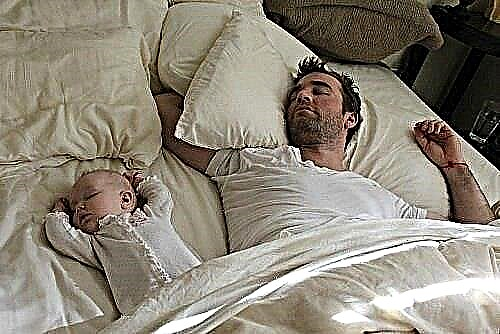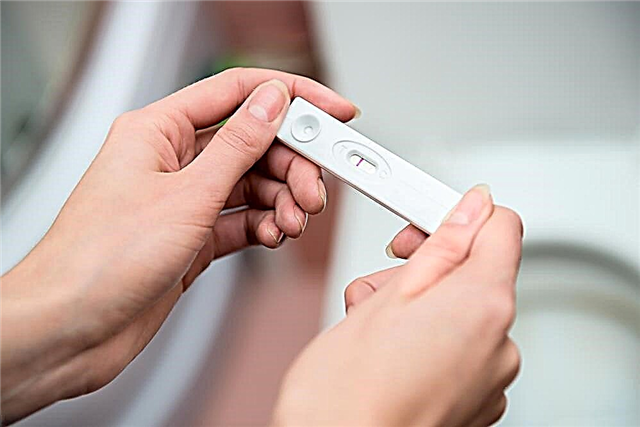
"Diacarb" is one of the most demanded diuretics, often used in diseases of the brain and eyes. Not everyone knows whether it is possible to give it to children, how to drink the medicine in childhood and what side symptoms it can provoke in the child's body.

Release form
The drug is produced in only one form - tablet form. There are no other options for Diakarba (capsules, injections or syrup). One package of the medicine contains 30 round flat white tablets, packed in blisters of 10 pieces.

Composition
The action of the drug is provided by its main ingredient, acetazolamide. Its dosage per tablet is 250 mg... Additionally, the drug may include sodium crosscarmellose, potato starch, povidone and other compounds.


Operating principle
Diacarb has a mild diuretic effect associated with inhibition of an enzyme called carbonic anhydrase by acetazolamide. Such an enzyme is found in the renal tubules, and because of its blockage, the excretion of bicarbonates, potassium and sodium in the urine increases.
In addition, carbonic anhydrase is also present in the choroid of the eyes (in the ciliary body), and the effect of the drug on it reduces moisture productionand also contributes decrease in intraocular pressure.
However, the most important thing for physicians is the effect of Diacarb on carbonic anhydrase in the brain tissues. By suppressing the activity of this enzyme, the production of cerebrospinal fluid is inhibited and intracranial pressure is reduced. This effect determines the presence of acetazolamide anticonvulsant action.
The drug taken orally is well absorbed and after 1-3 hours it is determined in the blood at the maximum concentration, which lasts up to 24 hours. The effect of the medication is observed within 12 hours after its administration. The drug is excreted unchanged, mainly by the kidneys.


Indications
Treatment with "Diakarb" is prescribed:
- With glaucoma.
- With epilepsy.
- With mild or moderate edema syndrome.
- With increased intracranial pressure.
- With hydrocephalus.
- With a concussion of the brain.
- For acute mountain sickness.


From what age is it allowed to take?
The drug can be prescribed to children under one year old - for example, if a child has hydrocephalus at 1 month old. At the same time, the use of "Diakarb" by infants (appointment to a 5-month-old baby or younger) must be monitored by a doctor.

Contraindications
Treatment with "Diakarb" is prohibited:
- With hypersensitivity to any component of the tablets.
- With acute renal failure.
- With severe liver disease.
- With diabetes mellitus.
- With Addison's disease.
- With low potassium levels, uremia or acidosis.

Side effects
- From the gastrointestinal tract, the patient may experience nausea, lack of appetite, diarrhea.
- Diacarb can cause a decrease in potassium levels and acidosis.
- The child's nervous system may react to Diacarb treatment with paresthesias, tinnitus, visual impairments and even seizures. If the medication is used for a long time, it may be drowsy, disorientated or tactile.
- Long-term use of the drug can also affect hematopoiesis, causing a decrease in the level of leukocytes and hemolytic anemia.
- In rare cases, the medication will cause itching or redness of the skin and muscle weakness.
- Long-term use of "Diacarb" can cause nephrolithiasis.

Instructions for use
The tablet must be swallowed (do not bite, drink with clean water). The scheme of administration and dosage of "Diakarb" is selected for each patient individually. If a child has an attack of glaucoma, then the daily dose is calculated by the patient's weight, multiplying the number of kilograms by 10-15. The resulting amount of active substance in milligrams is divided into three or four doses.
With epilepsy, the daily dose is determined by the age of the baby:
- At 4-12 months, 50 mg of acetazolamide is given in 1 or 2 doses.
- Two- and three-year-old children are prescribed 50 to 125 mg per day. The medicine is given in full dose once or divided into two doses.
- At the age of 4 years and older (for example, at 7 years old), the dosage of the drug is from 125 to 250 mg. The tablet should be drunk once in the morning.
The maximum dose of medication per day for children is considered 750 mg of acetazolamide.
Since the therapeutic effect of the drug decreases after several days of its use, "Diakarb" is always prescribed with breaks of 1 day (every 1-5 days of administration). Children with epilepsy are prescribed to take the medicine for 3 days, and then they do not drink it for 1 day, after which they take it again for 3 days - and so on.

Overdose
When the dose of "Diacarb" is exceeded, the side effects of the drug from the central nervous system, digestive system and other organs increase. If your child is breathing heavily after taking the pills, becomes drowsy, refuses to eat, or has a rash, see a doctor right away.

Interaction with other drugs
- To reduce the risk of potassium loss in patients, a combination of "Diakarb" and "Asparkam".
- It is not recommended to combine "Diacarb" and salicylates, carbamazepine, muscle relaxants, digitalis preparations and some other drugs, as this will increase their toxic effect.
- If the medicine is used in conjunction with drugs for epilepsy, it can lead to osteomalacia.
- Addition "Diakarba" other diuretics will enhance its diuretic effect (with the exception of acid-forming agents). The same effect is noted when combined with theophylline.

Terms of sale
To buy Diakarba in a pharmacy, you first need to get a prescription from your doctor. The average price of a pack containing 30 tablets is 250 rubles.

Storage conditions and shelf life
So that the medicine does not lose its medicinal properties, a place hidden from the light is selected for its storage, where the temperature is no more than +25 degrees. Such a place should be hidden from young children.

The shelf life of the tablets is 5 years.

Reviews
There are different reviews about the treatment of children with "Diakarb". In some, the medication is praised for the fact that the drug helped with increased intracranial pressure or edema, while in others they talk about side effects that have arisen during the intake (often children feel bad after the pills). At the same time, there are more positive reviews from parents whose children have been prescribed such a diuretic.
Pediatricians (including Komarovsky) call the drug effective and effective for epilepsy and glaucoma, therefore, Diacarb is most often prescribed in childhood for these two problems.
In addition, the medication is in demand in the practice of neurologists, who note its good therapeutic effect in perinatal encephalopathy, hydrocephalic syndrome, cysts in the brain, expansion of the ventricles of the brain and other problems. Doctors and mothers confirm that the appointment of "Diakarba" allows you to quickly eliminate such neurological symptoms as hypertonicity, tremors in sleep, and others.




